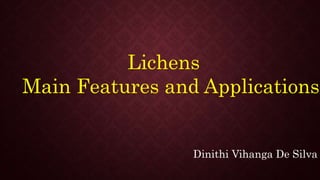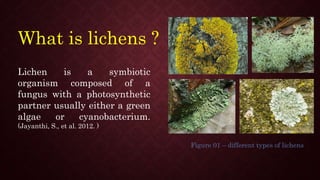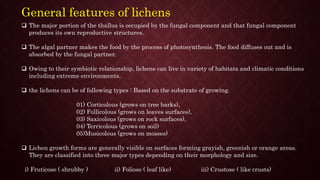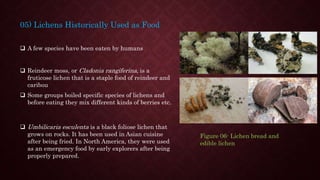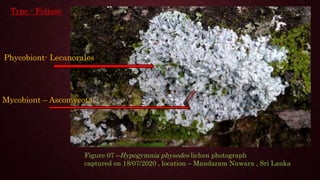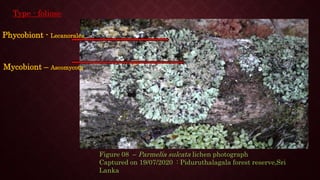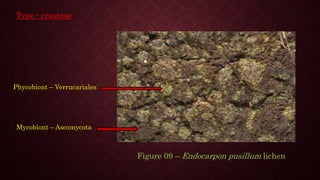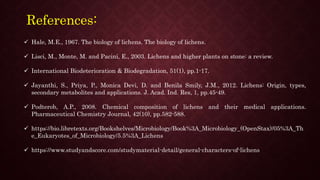Lichens are symbiotic organisms formed by a fungus and a photosynthetic partner, typically algae or cyanobacteria, allowing them to thrive in various environments. They have several applications, including being used in perfumes, as natural dyes, in medicine for their antimicrobial properties, and as indicators of air quality. The document highlights the structure, types, features, and extensive uses of lichens as well as their historical significance in human food and culture.
